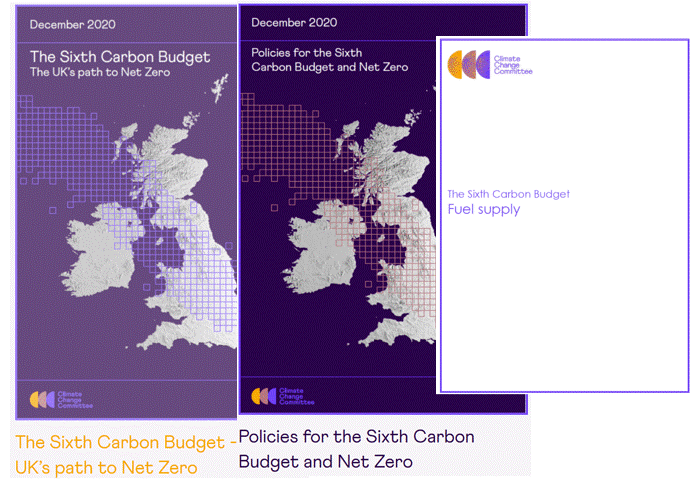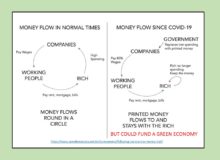The causes and effects of Climate Change are complex and multi-faceted. Carbon Dioxide is just one of the ‘greenhouse gases’ responsible for global warming so having access to sound sources of information is essential to understanding the issues.
International Bodies
The UN’s Intergovernmental Panel on Climate Change (IPCC)
The Intergovernmental Panel on Climate Change (IPCC) is the leading international body for the assessment of climate change. It was established by the United Nations Environment Programme (UNEP) and the World Meteorological Organization (WMO) in 1988 to provide the world with a clear scientific view on the current state of knowledge in climate change and its potential environmental and socio-economic impacts. IPCC has produced 5 reports The IPCC 2014 Fifth Assessment Report contains this definitive statement: “SPM 1.Observed Changes and their Causes
Human influence on the climate system is clear, and recent anthropogenic emissions of green-house gases are the highest in history. Recent climate changes have had widespread impacts on human and natural systems.”
The mitigation section III contains: “The ultimate objective…… stabilization of Greenhouse Gas concentration in the atmosphere at a level that would prevent anthropogenic interference with the climate system. Such a level should be achieved within a time frame sufficient to allow ecosystems to adapt naturally to climate change, to ensure that food production is not threatened and to allow economic development to proceed in a sustainable manner.”
The Clean Energy Ministerial (CEM)
“At the United Nations Framework Convention on Climate Change conference of parties in Copenhagen in December 2009, U.S. Secretary of Energy Steven Chu announced that he would host the first Clean Energy Ministerial to bring together ministers with responsibility for clean energy technologies from the world’s major economies and ministers from a select number of smaller countries that are leading in various areas of clean energy. By working together, these governments can accomplish more than by working alone.” …… “CEM initiatives are based on areas of common interest, and countries step forward to lead or support those initiatives that are priorities in their national context. This distributed leadership approach fosters clean energy collaboration and innovation around the world.”
“different countries lead and participate in:
- Appliances (SEAD) – Led by India and US
- Buildings and Industry (EMWG) – Led by Finland, Japan and US
- Sectorial (SWG) – Led by Japan
- Bioenergy – Led by Brazil
- Hydropower – Led by Brazil
- Solar and Wind – Led by Denmark, Germany and Spain
- 21st Century Power (21CPP)- Led by India and US
- Electric Vehicles (EVI) – Led by China and US
- Smart Cities (GSCN) – Led by United Arab Emirates
- Smart Grids (ISGAN) – Led by Italy, Korea and US
- Clean Energy Policy (Solutions Centre) – Led by Australia and US
- Energy Access (Global Leap) – Led by US
- Women in Energy (C3E)” – Led by US
(Note that the UK is a participant for Appliances, Electric Vehicles, Energy Access and Women in Energy.)
International Energy Authority
The IEA proposes that the following four key pillars are needed to make COP21 a success, from an energy perspective:
1. Peak in emissions – set the conditions to achieve an early peak in global energy-related emissions.
2. Five-year revision – review national climate targets regularly, to test the scope to raise ambition.
3. Lock in the vision – translate the world’s climate goal into a collective long-term emissions goal.
4. Track the transition – establish a process for tracking achievements in the energy sector.
Vox Energy and Environment, however, raises serious doubts on why the IEA consistently underestimates the growth of solar and wind. For instance, instead of assuming the S shape of the growth of a ‘disruptive’ technology it assumes linear growth that is wholly inadequate.
International Monetary Fund (IMF)
Climate change has become one of the world’s foremost policy challenges. In line with its mandate and expertise, the IMF focuses on the fiscal, financial, and macroeconomic challenges. The IMF also advises (e.g., through technical assistance to member countries) on the appropriate design of carbon pricing and fiscal reforms to promote greener growth more broadly, particularly with regard to the practicalities of getting prices right in energy and transportation systems to reflect environmental costs.
IMF Energy Subsidy Reform “While aimed at protecting consumers, subsidies aggravate fiscal imbalances, crowd-out priority public spending, and depress private investment, including in the energy sector. Subsidies also distort resource allocation by encouraging excessive energy consumption, artificially promoting capital-intensive industries, reducing incentives for investment in renewable energy, and accelerating the depletion of natural resources. Most subsidy benefits are captured by higher-income households, reinforcing inequality.”
IMF 2015 update. “Energy subsidies are projected at US$5.3 trillion in 2015, or 6.5 percent of global GDP, according to a recent IMF study. Most of this arises from countries setting energy taxes below levels that fully reflect the environmental damage associated with energy consumption.”
The World Bank
The World Bank Group Climate Change Group has four core objectives:
- Embed climate risk and opportunity and resilience into country strategies and internal processes.
- Play key roles in the international climate finance architecture to leverage and mobilize finance for low-carbon growth and resilient investments.
- Establish the World Bank Group as a solution provider with the best tools, analytics, and evidence of climate impact on all clients, particularly the most vulnerable.
- Continue to advocate for, drive, and support global action to avoid exceeding a 2°C warmer world and eventually achieve carbon neutrality in the global economy to enable achievement of the World Bank Group’s twin goals of ending extreme poverty and increasing shared prosperity.
The World Bank’s Decarbonizing Development Removing fossil fuel subsidies, which primarily benefit the wealthy, and implementing carbon taxes or cap-and-trade systems are two ways to free up or generate revenue that can lower costs of education, health care, and infrastructure and provide direct support for the poor while also reducing carbon emissions.
The World Wildlife Fund (WWF)
Through its Earth Hour City Challenge, WWF is recognizing and supporting cities’ transition toward 100 percent renewable energy and take actions to address local climate-related threats. WWF has other initiatives that can be seen by following the link.
The Global Legislators Organisation for a Balanced Environment (GLOBE)
“brings together prominent serving politicians and lawmakers, across party lines, to exert their authority and powers of law-making, legislative and budgetary oversight to advance practical action on sustainable development.”
Greenpeace
We defend the natural world and promote peace by investigating, exposing and confronting environmental abuse, and championing environmentally responsible solutions.
National Geographic
has a series of teaching resources, including one on solar generation across the world.
The US Energy Dept “The mission of the Energy Department is to ensure America’s security and prosperity by addressing its energy, environmental and nuclear challenges through transformative science and technology solutions.”
UK Bodies
The Committee on Climate Change (CCC)
is an independent, statutory body established under the Climate Change Act 2008 to advise the UK Government on reducing greenhouse gas emissions and preparing for climate change. This act: “commits the UK to reducing emissions by at least 80% in 2050 from 1990 levels“.
Climate Change Coalition
“the UK’s largest group of people dedicated to action on climate change and limiting its impact on the world’s poorest communities.”
The Met Office
“The Met Office, particularly through the Met Office Hadley Centre, is constantly expanding the observations and monitoring of past and current climatic conditions, making advances in forecasting the regional climate and climatic extremes for the coming seasons, and improving the understanding of climate change.
Our staff make significant contributions to scientific literature and to a variety of climate science reports, including the Assessment Report of the Intergovernmental Panel on Climate Change (IPCC). We provide in-depth information to, and advise, the Government on climate science issues.”
The Centre for Alternative Technology
“is an education and visitor centre demonstrating practical solutions for sustainability. We cover all aspects of green living: environmental building, eco-sanitation, woodland management, renewable energy, energy efficiency and organic growing.” CAT has a research project showing that a modern, zero-emissions society is possible using technology available today. See Zero Carbon Britain for powering up renewable energy and powering down energy demands, whilst maintaining a modern standard of living.
The Building Research Establishment (BRE)
“BRE helps government, industry and business to meet the challenges of our built environment. Today’s need to combat climate change, and the significant economic and social issues we now face, are no exceptions.
BRE is an independent and impartial, research-based consultancy, testing and training organisation, offering expertise in every aspect of the built environment and associated industries.”
and the BRE National Solar Centre (NSC) based at the Eden Project in Cornwall. “Independent, evidence based information about Solar Energy Systems and related technologies.”
Friends of the Earth (FOE)
“exists to create a just world where people and nature thrive. Because of this we work on a wide range of issues.” For instance it has a paper on the UK contribution to the Paris 2015 global climate deal.



